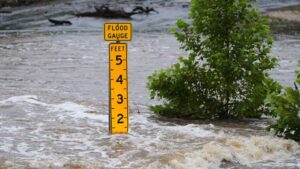
Physicists have long relied on thought experiments, or Gedankenexperimente, to explore complex scientific ideas that are difficult to test in reality. One of the most famous examples is Schrödinger’s cat, which illustrates the paradoxes of quantum mechanics. Recently, a similar approach was applied to climate change, raising the question: when could scientists have first detected the impact of human activity on the global climate?
Using simulations from nine advanced climate models, researchers embarked on a thought experiment to determine when it would have been possible to identify the effects of increased atmospheric CO2 due to fossil fuel burning and land use changes. The findings underscore the importance of continuous climate monitoring and reveal surprising insights into the early detection of climate change.
Historical Context and Assumptions
The thought experiment assumed that, as early as 1860, scientists had the technology to monitor global temperature changes in both the troposphere and the stratosphere. In reality, comprehensive global monitoring only began in the 1940s with weather balloons, and satellite monitoring started in the late 1970s. The experiment also relied on accurate historical data regarding human-induced changes in greenhouse gases, particulate pollution, and land use, alongside natural factors like volcanic activity and solar energy output.
One of the pivotal inspirations for this study was the work of Syukuro Manabe, who, along with Richard Wetherald, published a groundbreaking paper in 1967. Their research predicted that increased CO2 levels would result in warming of the troposphere and cooling of the stratosphere—a pattern that has since been confirmed by weather balloon and satellite data.
The Human Fingerprint on Climate
Manabe and Wetherald’s prediction provided a clear “fingerprint” of human influence on atmospheric temperatures, distinct from natural temperature variations caused by the sun, volcanic eruptions, and internal climate variability. This pattern of warming in the troposphere and cooling in the stratosphere has become a defining piece of evidence for human-caused climate change.
“The human ‘fingerprint’ on atmospheric temperature was distinctly different from the natural temperature fingerprints caused by the sun, volcanoes, and internal climate noise.”
The thought experiment revealed that even by 1885, the relatively small increase in CO2 levels since 1860 could have been detected as a human-induced signal of stratospheric cooling. This was a time when fossil fuel use was just beginning to rise during the industrial revolution, and atmospheric CO2 levels had increased by only 10 parts per million—a modest change compared to the more recent increase of 54 parts per million from 2000 to 2024.
Implications and Modern Challenges
The experiment raises intriguing questions about the potential impact of earlier awareness of climate change. Could humanity have taken a different path in energy use if the effects of fossil fuel burning had been recognized sooner? While this remains speculative, the history of addressing global environmental issues suggests that early knowledge might have spurred action to reduce greenhouse gas emissions.
Today, the work of agencies like NOAA and NASA is crucial in identifying and understanding climate change patterns. However, in the United States, climate science funding is under threat, risking a “data vacuum” that could hinder future research and policy-making.
“Stopping climate work will lead to a data vacuum that could last years or even decades. This experiment in willful ignorance can only end poorly.”
This thought experiment not only highlights the importance of historical climate data but also serves as a warning against the dangers of neglecting climate science in favor of ideology and disinformation. The consequences of such neglect could be profound, affecting our ability to respond to and mitigate the impacts of climate change.






